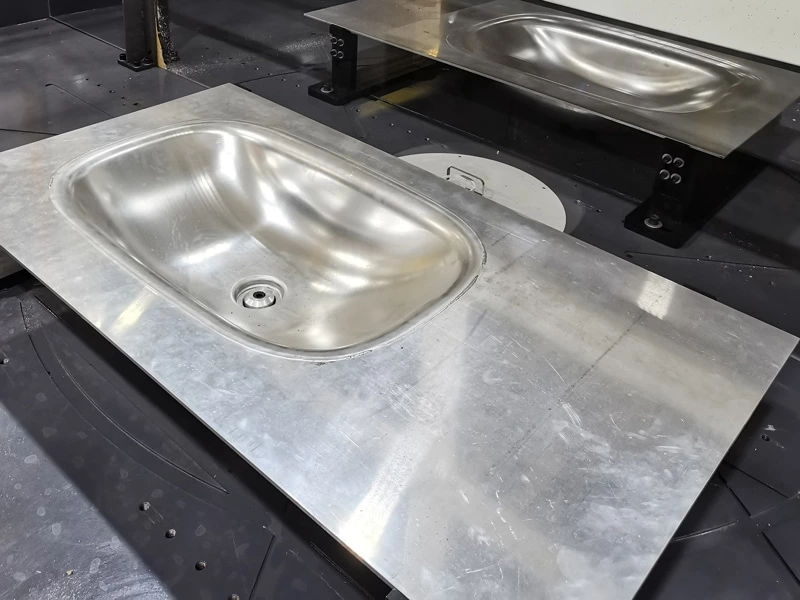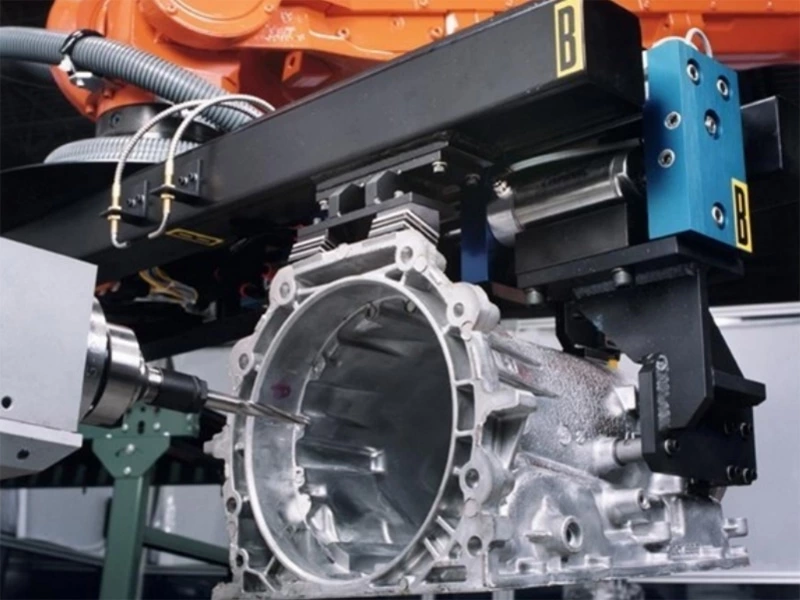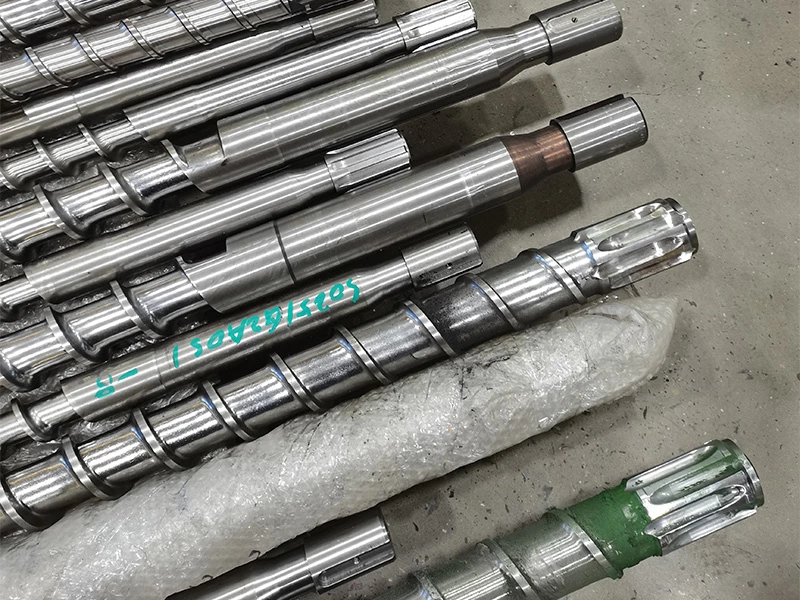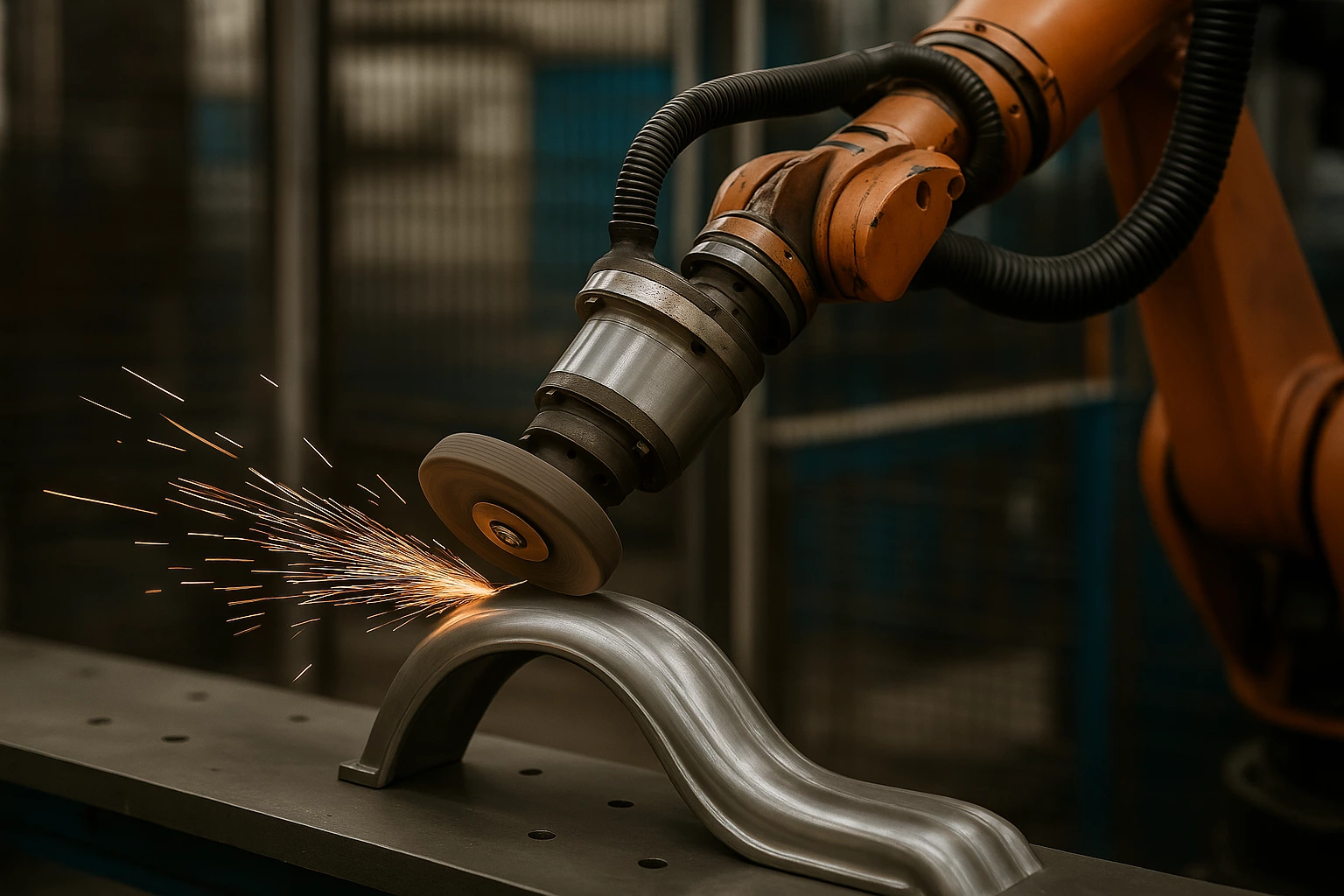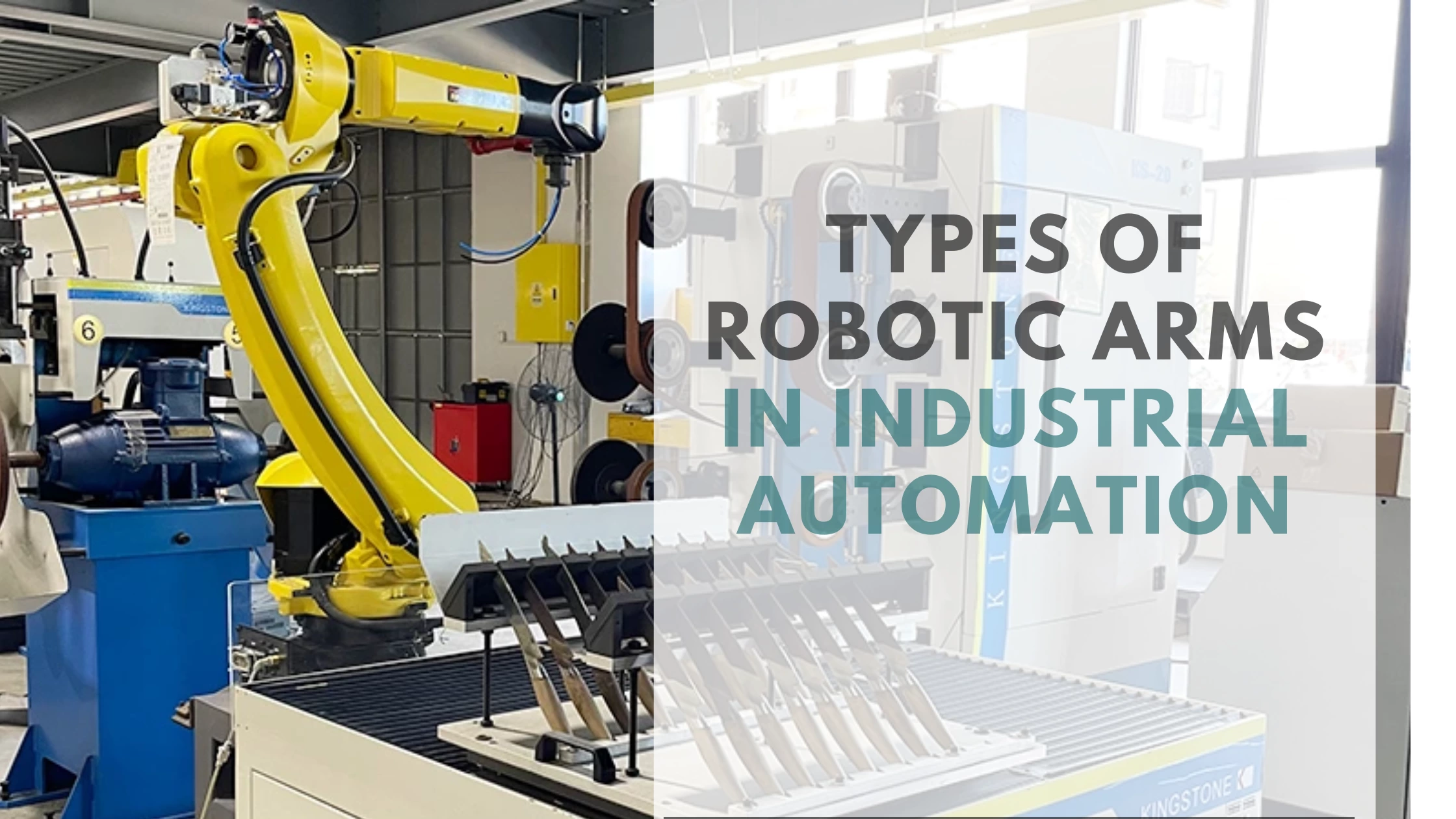Robotic Finishing: The Final Step in Factory Automation
Introduction: Everyone Talks About Automation. But Are You Ignoring the Final Step?
In today’s factories, automation has transformed everything from welding to material handling. Yet, surface finishing—grinding, polishing, and deburring—remains surprisingly manual. It’s often the last untouched process on a production line, even in facilities with robots at nearly every other station.
But here’s the thing: that last step might be costing you the most.
Inconsistent quality, labor shortages, safety risks, and low throughput in finishing lines are quietly eating into productivity and margins. A 2022 report by Markets & Markets projected the global robotic grinding market to grow at 8.9% CAGR. Yet, based on industry observations, a majority of surface finishing operations—especially in small to mid-size factories—are still performed manually.
While many manufacturers are aware of these issues, most still believe robotic finishing is too complex, too costly, or not mature enough.
That belief is no longer true.
This article dives into why robotic finishing is the final frontier of automation, why it’s technically challenging, and how KS ROBOT has made it practical, scalable, and surprisingly fast to implement.
The Hidden Costs of Manual Finishing
While automation has replaced labor in welding, painting, and CNC loading, most factories still rely on manual labor to finish parts. The reasons are understandable—finishing requires a skilled hand, surface sensitivity, and process intuition. But the costs of sticking with manual operations are steep:
- Inconsistent Quality: One operator’s “perfect finish” might be another’s reject. In automotive aluminum trim or sanitary fittings, slight surface deviations often lead to customer complaints or part rejection.
- High Labor Dependence: In regions facing labor shortages, the training curve for finishers is steep. New operators often take months to reach productivity.
- Unsafe Conditions: According to OSHA, grinding dust exposure is among the top safety hazards in metal fabrication. Noise and repetitive motion injuries compound the risk.
- Low Scalability: Manual lines lack the flexibility for multi-shift operations or mixed-model production. Introducing new SKUs often stalls production due to retraining or retooling delays.
In short, while finishing may represent a small fraction of your process time, it often carries disproportionate risk and cost.
Why Robotic Finishing Is the Most Complex Automation Challenge
Surface finishing is deceptively difficult to automate. It involves interacting with physical surfaces under variable conditions—something traditional robots weren’t designed for. Key challenges include:
-
Force Control That Thinks Like a Human Hand
Grinding isn’t just about following a path. Robots must maintain precise contact pressure while moving across curved, unpredictable surfaces. KS systems use closed-loop force control to simulate human-like pressure adjustments in real time.
-
Shape Complexity and Tolerance Variance
No two castings or forged parts are exactly alike. Unlike welding, which targets precise seams, finishing targets surfaces with variation. KS ROBOT uses floating tool heads and vision-assisted positioning to manage this. Even within the same production batch, slight warping or thermal distortion can impact contact angles—our systems adapt automatically.
-
Abrasive Tool Wear and Process Drift
Sanding belts, polishing pads, and deburring heads all wear unevenly. Traditional automation ignores this; KS solutions don’t. Our systems include auto-compensation modules to measure tool degradation and realign pressure points, ensuring every part meets spec.
The KS ROBOT Approach: Automate the Last Step with Confidence
KS ROBOT is not a robot seller. We’re system integrators and problem solvers. We deliver full-stack solutions that automate finishing with the same reliability, repeatability, and intelligence as upstream processes.
Our Robotic Finishing Systems Include:
- Multi-Axis Robots (ABB, KUKA, FANUC): Seamless integration with payloads from 10 to 200 kg.
- Closed-Loop Force Control: Maintains stable finishing pressure, even with surface variability.
- ATI/ACF Floating Tools: Allow tools to “float” along the workpiece, maintaining constant pressure and avoiding defects.
- Auto Waxing & Tool Compensation: Enhances finish quality and tool life, reduces human error.
- Vision-Guided Handling: Perfect for mixed-model production and flexible part positioning.
- Enclosures & Dust Extraction: Keep your operations clean, compliant, and worker-safe.
Case Study: What Happened When a Faucet Factory Went Robotic
A leading sanitaryware manufacturer approached KS ROBOT with a challenge: they needed to increase output, improve surface finish consistency, and reduce labor dependency—without compromising flexibility.
This is based on a real KS project; specific client information has been anonymized for confidentiality.
Their existing setup relied on 8 workers per shift polishing brass and stainless-steel faucets manually. Product quality varied by operator skill. Labor turnover delayed deliveries. Health risks from airborne particulates were rising.
We implemented a dual-robot polishing station featuring:
- Dual-belt sanding systems
- Polishing wheels with automated waxing
- 3D vision-guided workpiece pickup
- Smart fixture design for quick SKU switching
Outcomes:
- +40% Throughput
- Surface Finish Tolerance improved to <±0.05mm
- Reduced Manual Labor from 8 operators to 2
- Downtime dropped by 35% through automatic tool change and compensation
- ROI Achieved in less than 13 months
This client now runs robotic finishing on all high-runner SKUs and is expanding automation to lower-volume items.
Why Now Is the Time to Invest in Robotic Finishing
The market forces that made robotic welding mainstream are now pushing robotic finishing forward. Here’s why you shouldn’t wait:
- Labor Shortages Are Permanent: Finishing skills are aging out; training pipelines are slow.
- Customer Expectations Are Rising: Cosmetic quality, repeatability, and documentation are now essential.
- Compliance Pressures Are Growing: Clean air standards and EHS mandates require better dust control and fewer human exposures. The EU's 2023 Clean Industrial Emissions Directive sets stricter baselines.
- Technology Is Ready: KS systems use proven components and mature software—no need to prototype. Offline programming and standard workstations reduce integration time.
- Cost of Inaction: Every day without robotic finishing is a day of inconsistent quality, wasted labor, and unrealized margin. It also weakens your position in global OEM bidding where factory automation levels are increasingly scrutinized
Conclusion: Don’t Let the Last Step Be the Weakest Link
You’ve invested in CNC machines, robotic arms, and MES platforms. Why stop short at the surface?
Finishing is where quality becomes visible, and it’s where too many factories leave precision to chance. KS ROBOT helps you close the loop with systems that grind, polish, and deburr with consistency, safety, and efficiency.
Our engineering team works hand-in-hand with manufacturers to assess feasibility, identify ROI points, and deploy scalable finishing systems tailored to your parts and processes.
Let’s transform your weakest link into your biggest differentiator.

